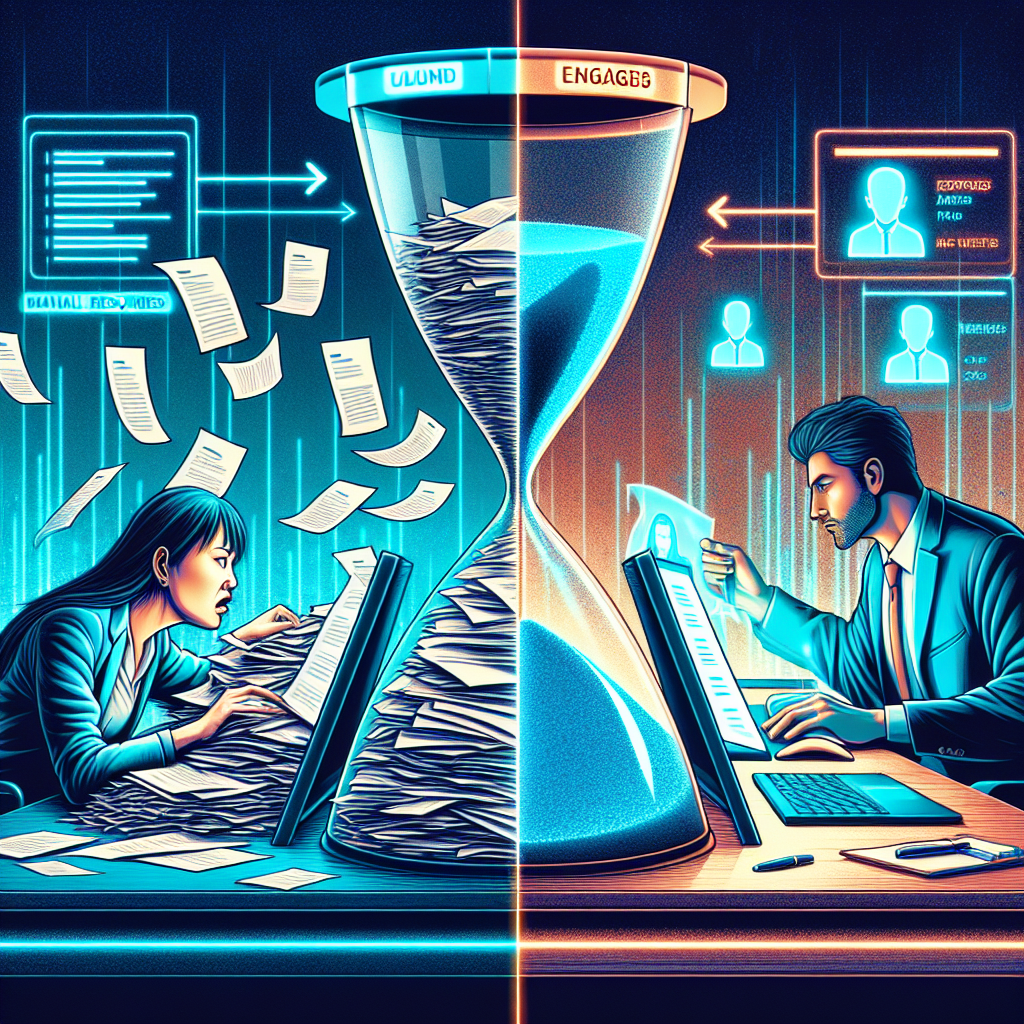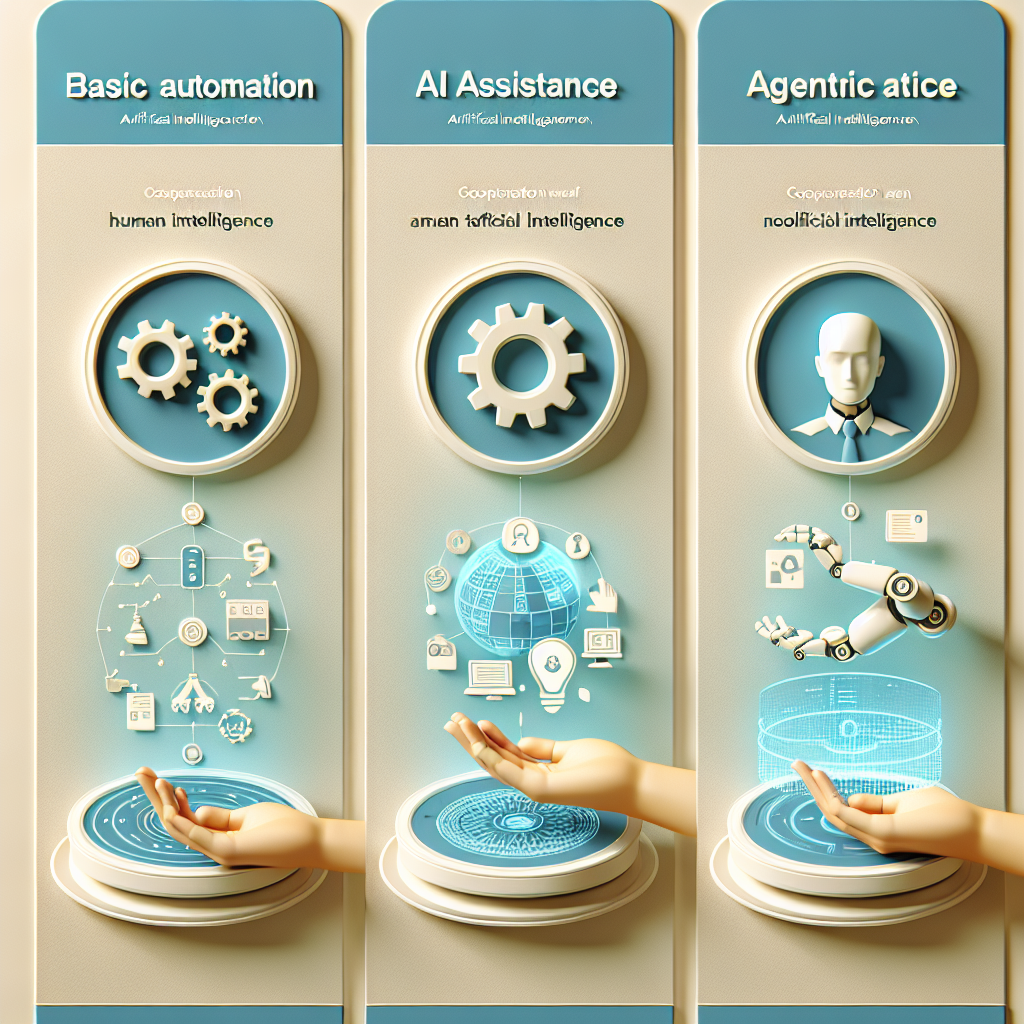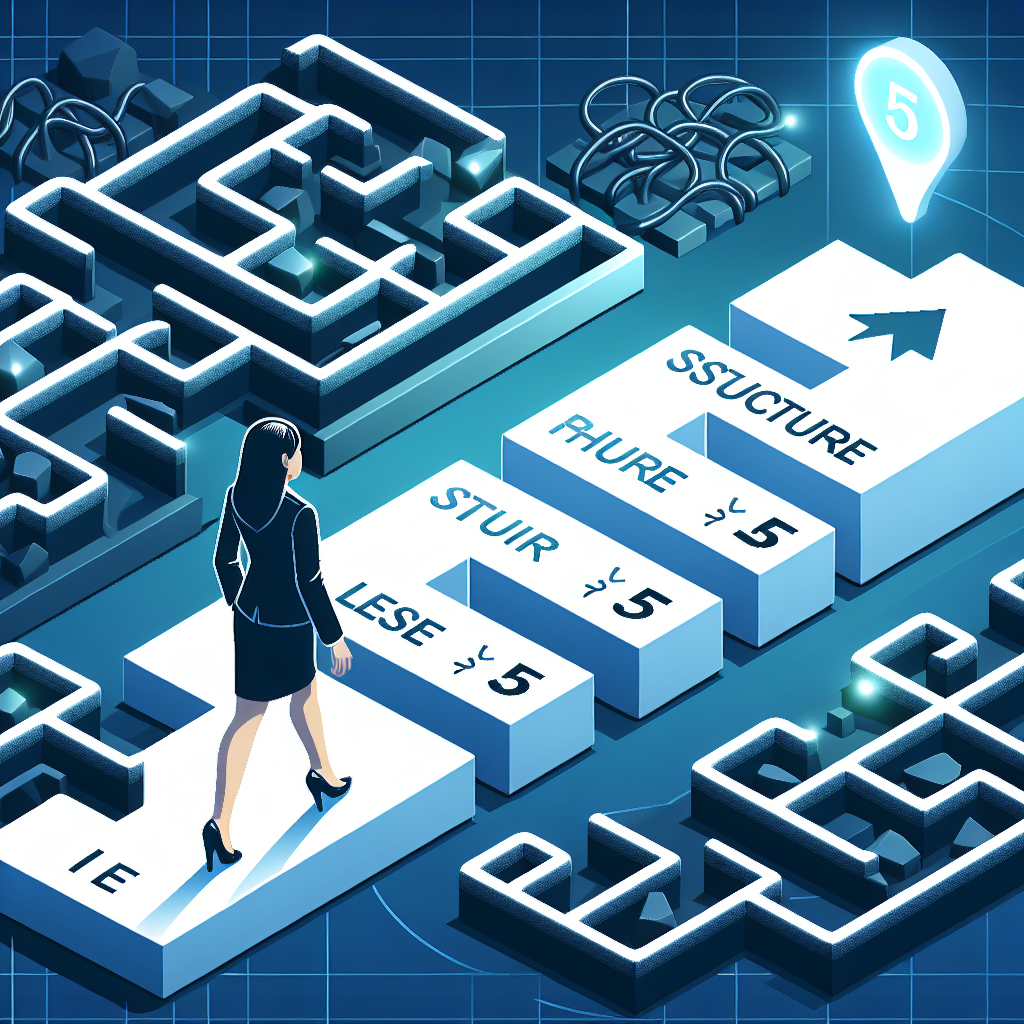Is your company losing the war for talent before the first battle is even fought? For many organizations, the answer is a frustrating yes. The culprit is often a silent saboteur: an outdated, inefficient hiring process bogged down by manual tasks and clunky technology. The hidden costs are staggering—lost productivity, damaged employer brand, and top candidates accepting offers from competitors while your team is still sifting through resumes. The pressure to deliver quality talent faster is immense, but the solution isn’t just a new tool; it’s a new strategy.
Enter the AI Agentic Applicant Tracking System (ATS). This is not merely an upgrade; it’s a fundamental shift from reactive list-management to proactive, autonomous talent acquisition. But in a crowded market filled with buzzwords, how do you choose the right platform?
This is not another generic feature list. This is the definitive C-suite playbook for choosing an AI-powered ATS. We will cut through the marketing hype to provide a practical evaluation framework, justify the ROI, and deliver direct, head-to-head competitor comparisons. Our goal is to empower you to make a data-driven decision that solves your specific hiring pains and drives measurable business growth.
- The Hidden Costs of Inaction: Why Your Current Hiring Process is Failing
- What is an AI Agentic ATS? Moving Beyond Basic Automation
- The 5-Step Framework for Choosing the Right ATS
- ATS Competitor Analysis: Excelhire vs. The Market
- From Frustration to ROI: Your Next Move
- References
The Hidden Costs of Inaction: Why Your Current Hiring Process is Failing
The decision to invest in new HR technology is no longer a luxury; it’s a strategic imperative. According to global research firm Gartner, recruiting and onboarding technology is the #1 investment priority for HR leaders.[1] The reason is simple: the cost of inaction is far greater than the cost of investment. Outdated systems and manual processes create a significant drag on efficiency, profitability, and competitive advantage.
This inefficiency isn’t just a minor annoyance; it’s a quantifiable drain on resources. Consider that the average time to hire manually takes about 41 days. Every day an essential role remains unfilled, productivity suffers and revenue opportunities are missed. Furthermore, these legacy systems often fail at the most critical human element: communication. A survey by HR.com found that a startling 22% of respondents said their ATS can’t be used effectively to communicate with candidates, leading to a poor experience that drives top talent away.
To understand the true financial impact on your organization, consider a simple calculation: multiply the number of hours your recruiters spend on manual data entry and sourcing each week by their average hourly wage. The resulting figure represents a direct loss of productivity that could be reinvested into strategic, high-value activities like candidate engagement and closing.
The ROI of Speed: How Slow Hiring Loses Top Talent
In today’s competitive talent market, speed is the ultimate currency. The best candidates are often off the market in a matter of days. A slow, clunky hiring process, often caused by an inefficient applicant tracking system, is a direct competitive disadvantage. One open position can cost a business thousands of dollars to fill, and every delay increases that cost and the risk of losing your ideal candidate.
Let’s look at a simple before-and-after scenario:
- Without a modern ATS: A promising candidate applies. Their resume sits in an inbox for three days. It takes another two days for a recruiter to manually review it and forward it to the hiring manager. By the time you reach out, the candidate has already accepted another offer.
- With an AI Agentic ATS: A promising candidate applies. Within minutes, the AI agent parses their resume, matches their skills to the job requirements, and automatically schedules an initial screening call based on the recruiter’s calendar availability. The candidate is engaged immediately, feels valued, and moves forward in your pipeline.

This acceleration from days to minutes is not just about efficiency; it’s about winning.
Beyond Spreadsheets: The Unseen Drain of Manual Sourcing
Manual candidate sourcing is one of the most significant time sinks for any recruiting team. It involves endless hours spent searching job boards, scrolling through LinkedIn, and manually entering data into spreadsheets or a cumbersome legacy ATS. This repetitive, low-value work is not only inefficient but also a major cause of recruiter burnout.
“We used to spend 60% of our day just building lists and copying and pasting data. It was a grind. When we shifted to an automated, AI-driven sourcing model, it was like a fog lifted. My team could finally focus on what they do best: building relationships with top-tier candidates. Our productivity doubled, and frankly, our job satisfaction went through the roof.”
This is the core problem an AI Agentic ATS is built to solve: freeing human talent from robotic work to focus on strategic initiatives that drive business value.
What is an AI Agentic ATS? Moving Beyond Basic Automation
The term “AI” is ubiquitous in HR technology, but not all AI is created equal. To make an informed decision, it’s crucial to understand the evolution from basic automation to true agentic AI. This shift aligns with a key trend identified by Aptitude Research, which notes that companies are moving from “Reactive” to “Proactive” talent acquisition.[2] An AI Agentic ATS is the technology that enables this strategic leap.
Here is a simple framework to understand the difference:
- Level 1: Basic Automation. This includes features like email templates and automated rejection letters. The system performs pre-programmed, rule-based tasks but has no intelligence.
- Level 2: AI Assistance. This is where most “AI-powered” systems operate. They use AI for tasks like resume parsing (extracting information) and basic candidate matching. The AI assists the recruiter but requires significant human oversight and direction.
- Level 3: Agentic AI. This is the new frontier. An AI Agentic ATS doesn’t just assist; it acts. It can autonomously source candidates from multiple channels based on an ideal profile, engage them with personalized outreach, and manage the initial stages of the hiring process with minimal human intervention. It functions like a dedicated, 24/7 recruiting assistant.

For a broader perspective on how technology is reshaping the workforce, the World Economic Forum’s Future of Jobs Report provides valuable context on the macro trends driving this evolution.
Key Terms Glossary
- Agentic AI: A type of artificial intelligence that can operate autonomously to achieve goals. In recruiting, it proactively sources, engages, and qualifies candidates on behalf of the recruiter.
- Talent Intelligence: A data-driven approach to understanding the talent market, including candidate skills, competitor hiring trends, and salary benchmarks, to make more strategic hiring decisions.
Core Capabilities of a True Agentic Platform
When evaluating a modern ATS, look for these core agentic capabilities that go beyond simple automation:
- Autonomous Sourcing: The AI actively scours job boards, professional networks, and internal databases to find qualified passive and active candidates who match your ideal profile, continuously building your talent pipeline.
- Intelligent Candidate Matching: The system goes beyond simple keyword matching to understand context, skills, and experience, ranking and shortlisting the most qualified candidates with a high degree of accuracy.
- Automated Outreach & Scheduling: The AI agent can initiate personalized email campaigns to engage candidates, handle initial Q&A via chatbots, and seamlessly schedule interviews by syncing with hiring manager and candidate calendars.
Ethical AI in Hiring: Ensuring Fairness and Compliance
With great power comes great responsibility. The use of AI in hiring raises important ethical questions about fairness and bias. A trustworthy AI Agentic ATS vendor must be committed to mitigating bias and ensuring compliance. This means the AI should be designed to focus on skills, experience, and qualifications, ignoring demographic data that can lead to discriminatory outcomes.
When evaluating platforms, ask vendors how their algorithms are trained and what steps they take to ensure transparency and fairness. For HR leaders, staying informed on regulatory standards is critical. The EEOC Guidance on AI in Hiring provides an authoritative resource for understanding compliance obligations in the United States.
The 5-Step Framework for Choosing the Right ATS

Choosing an ATS is a major business decision that requires a structured, methodical approach. Vague requirements lead to poor choices. This 5-step playbook will guide you from initial frustration to a confident, data-backed decision.
- Define Needs & Involve Stakeholders
Before you look at a single product, look inward. The Society for Human Resource Management (SHRM) wisely advises leaders to “Determine must-have features versus nice-to-have features” as a foundational step.[3] Involve key stakeholders from recruiting, IT, finance, and leadership to build a comprehensive list of requirements. What are the biggest bottlenecks in your current process? What integrations are non-negotiable? - Research & Shortlist Vendors
With your requirements defined, begin market research. Look for vendors that specialize in your industry or company size. Pay close attention to platforms that explicitly detail their agentic AI capabilities, moving beyond basic automation. Aim to create a shortlist of 3-5 vendors who appear to meet your core “must-have” criteria. - Conduct Scored Demonstrations
This is the most critical step. Do not let vendors lead you through a generic sales pitch. You are in control. Provide each vendor with 2-3 real-world scenarios you want them to demonstrate (e.g., “Show me how your system would source and engage candidates for a Senior Software Engineer role”). Use a scored evaluation card to rate each vendor consistently across your key requirements.
To help you get started, we recommend using a comprehensive guide like the SHRM’s ATS Selection Toolkit as a valuable, non-competitive resource.
- Validate with User Reviews & References
Look beyond the demo. Check third-party review sites like G2 and Capterra to understand the real-world user experience. Pay attention to comments about implementation, customer support, and ease of use. Ask the vendor for 2-3 client references that are similar to your organization in size and industry. - Make the Business Case
Finally, synthesize your findings into a clear business case for your preferred vendor. This should include your evaluation scorecard, key differentiators, pricing, and a projected ROI based on time savings, reduced cost-per-hire, and improved hiring quality. Present a clear, data-driven recommendation to leadership.
ATS Competitor Analysis: Excelhire vs. The Market
Now, let’s move from framework to specifics. To illustrate the evaluation process, we’ll conduct a direct competitor analysis, comparing Excelhire’s AI Agentic ATS against established market players like Ceipal and positioning it as a modern alternative to legacy systems like Jobdiva and Oorwin. Our analysis is guided by user sentiments and a focus on the “Best For” scenarios to help you find the right fit.
Feature-by-Feature: Excelhire vs. Ceipal ATS Comparison
Ceipal is a well-known ATS in the staffing industry, but as AI technology advances, a direct comparison is essential for buyers seeking the most modern solution. While both platforms offer core ATS functionalities, the key differentiators lie in the depth and autonomy of their AI.
To provide a clear visual, here is a breakdown of how they compare on key features:
| Feature | Excelhire | Ceipal | Key Differentiator |
|---|---|---|---|
| Candidate Sourcing | Agentic AI: Autonomous, 24/7 sourcing across multiple channels based on ideal profiles. | AI-Assisted: AI-powered search and resume harvesting features that require recruiter initiation. | Excelhire’s AI acts as a proactive sourcing agent, while Ceipal’s AI functions more as a powerful search tool for the recruiter. |
| Candidate Engagement | Automated & Personalized: AI crafts and sends personalized outreach sequences and manages initial responses. | Automation Rules: Relies more on pre-set email templates and rule-based automation. | Excelhire focuses on creating dynamic, personalized communication at scale, which user reviews suggest can be a more manual process in Ceipal. |
| CRM Integration | Deeply integrated talent CRM for proactive pipeline building and relationship management. | Strong CRM capabilities, often cited as a core strength by users. | The primary difference is the agentic layer; Excelhire’s AI actively populates and nurtures the CRM pipeline, reducing manual data entry. |
| User Interface (UI) | Modern, intuitive, and designed for recruiter efficiency. | Generally considered functional but can be complex for new users, according to some user reviews. | Excelhire is built with a focus on a clean, modern user experience to minimize clicks and streamline workflows. |
| Best For | Staffing agencies and HR teams seeking maximum automation and a proactive, AI-driven recruiting engine. | Large staffing firms that need a robust, feature-rich system and have dedicated resources for training and configuration. |
The Modern Upgrade: Why Excelhire is a Top Alternative to Jobdiva and Oorwin
Many growing firms find themselves constrained by the limitations of older platforms like Jobdiva and Oorwin. Users often search for alternatives due to clunky user interfaces, a lack of sophisticated AI, and pricing models that don’t scale effectively. Excelhire is designed to directly address these pain points.

-
Problem: “My team finds Jobdiva’s interface outdated and difficult to navigate, which slows down our workflow.”
Excelhire Solution: Excelhire provides a clean, modern, and intuitive user interface designed to minimize clicks and maximize recruiter productivity, making adoption faster and daily use more efficient.
-
Problem: “Oorwin has some automation, but we still spend too much time on manual sourcing and initial outreach.”
Excelhire Solution: Excelhire’s true agentic AI automates the entire top-of-funnel process. The AI agent autonomously sources, vets, and engages candidates, freeing your team to focus on interviewing and closing qualified talent.
-
Problem: “We’re looking for better AI and automation features than our current system provides, but we need predictable pricing.”
Excelhire Solution: Excelhire is built on a foundation of cutting-edge AI. It offers transparent pricing designed to deliver clear ROI, a crucial factor for businesses evaluating alternatives where pricing can be complex. For context, some alternatives in the market offer plans ranging from a ‘$35 per user/month’ starter tier to a ‘$70 per user/month’ professional plan, highlighting the need for clear cost-benefit analysis.
Migration Tip Box:
Switching your ATS can feel daunting, but a modern platform should make it seamless. When considering a move from Jobdiva or Oorwin, ask potential vendors about their data migration process, the level of support provided during onboarding, and their average time-to-value for new clients. A strong partner will have a dedicated team to ensure a smooth transition.
From Frustration to ROI: Your Next Move
The evidence is clear: clinging to an inefficient hiring process is no longer a viable option. The hidden costs of lost time, missed opportunities, and top candidates slipping through your fingers are too high. The strategic power of a true AI Agentic ATS lies in its ability to transform your talent acquisition function from a reactive cost center into a proactive, data-driven engine for business growth.
By following a structured evaluation process—defining your needs, conducting scored demos, and making a data-backed business case—you can confidently select a platform that delivers real results. Choosing the right ATS is a strategic business decision, not just an HR purchase. Excelhire is built from the ground up to deliver that measurable ROI, empowering your team to hire smarter, faster, and more efficiently than ever before.
Ready to see how an AI Agentic ATS can transform your hiring and drive business growth? Schedule a personalized demo of Excelhire today and we’ll build your ROI case together.
Disclaimer: The features, pricing, and user sentiments discussed in this competitor analysis are based on research conducted at the time of writing and are subject to change. Readers should conduct their own due diligence and request live demos for the most current information.
References
- Gartner. (2024). Top 5 HR Technology Investments for 2024. Retrieved from https://www.gartner.com/en/human-resources/trends/hr-technology-investments-for-2024
- Aptitude Research. (2024). Talent Acquisition Technology: Key Trends for 2024. Retrieved from https://aptituderesearch.com/research/talent-acquisition-technology-key-trends-for-2024/
- The Society for Human Resource Management (SHRM). (N.D.). Choosing an Applicant Tracking System Toolkit. Retrieved from https://www.shrm.org/topics-tools/tools/toolkits/choosing-an-applicant-tracking-system